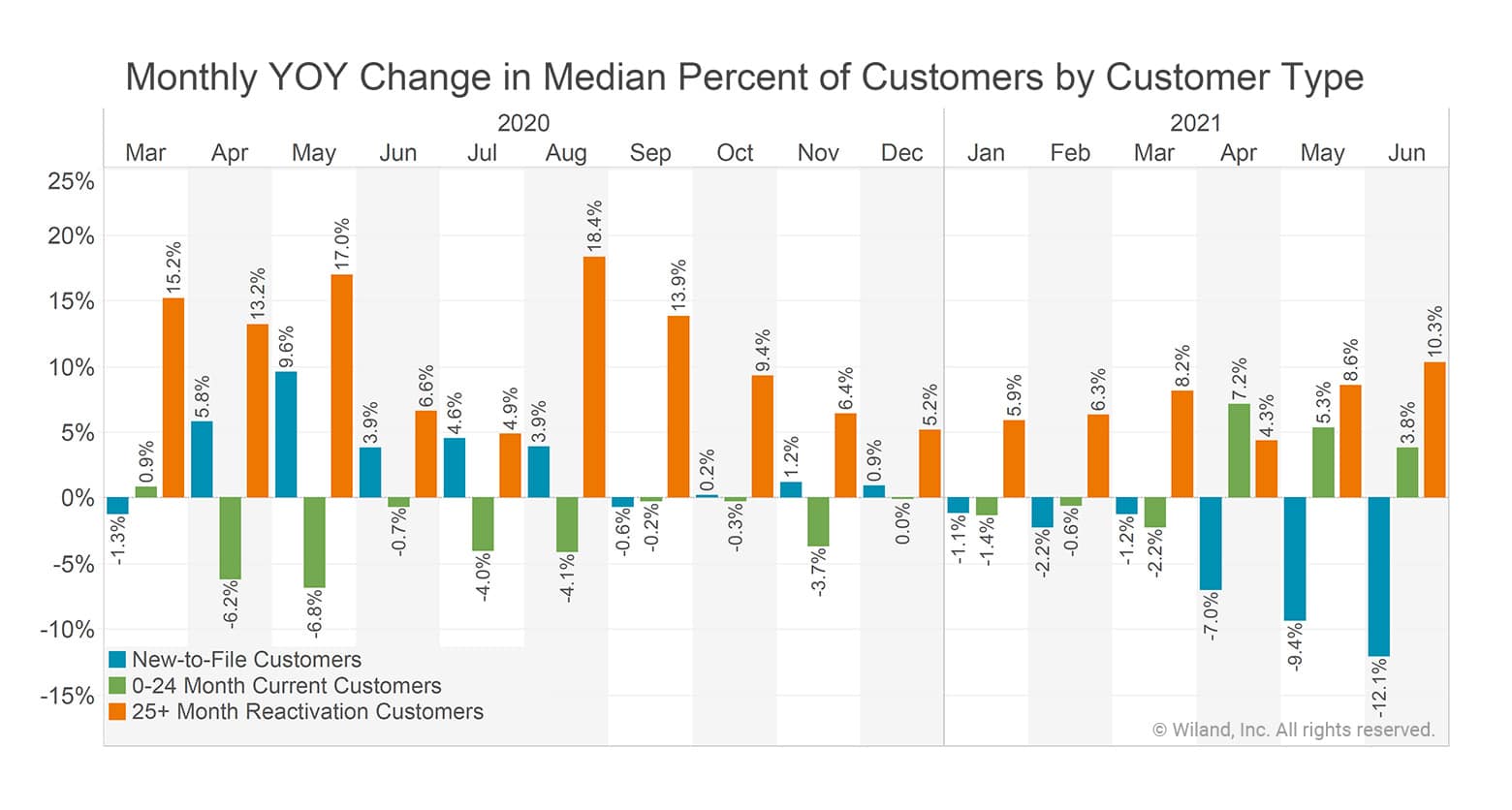How DTC Retailers Can Optimize Their Marketing for 2022
The calendar says November, but retailers are actively looking ahead to 2022. What can we learn from the past year, and how can we stay responsive to the next round of likely changes in the industry?

In my previous blog post, we discussed how the learnings from the roller coaster that was 2020 could be instructive for 2021 holiday planning. We suspected at the time that paper and postage costs would continue to be concerns for direct marketers—a prediction that has certainly (and unfortunately) come true. And we didn’t fully appreciate how impactful product shortages caused by supply chain issues would be on holiday fulfillment. That’s shaping up to be a huge part of the 2021 story, although there are signs of improvement on the horizon.
If 2020 was shocking and 2021 downright weird, what does that mean for 2022? For context, let’s drill down into the choices DTC retail brands have made in the recent past. Analysis by Wiland’s Business Intelligence group (illustrated below) shows that while retention has been stable and reactivation particularly robust over the past 12 to 15 months, new-to-file customer growth has declined sharply in DTC retail.

New-to-file customer growth has suffered largely because acquisition campaigns were put on hold by many brands. That’s an understandable decision, as new customer acquisition requires significant investment in time and resources that are in short supply. Under these circumstances, focusing efforts on retaining current profitable customers and reactivating lapsed customers has been a necessity. Put simply, you can mail fewer pieces, run more targeted campaigns to your known buyers, and still hit many of your numbers. But moving away from acquisition has long-term implications for file growth and associated revenue that cannot be ignored.
Of course, by now retailers are actively looking ahead to 2022 planning. What can we learn and how can we stay responsive to the next round of possible changes in the industry? Here are my top three recommendations for DTC retail marketers as they chart their course for 2022.
- See it out. When it comes to marketing challenges, we’re clearly not out of the woods yet. Paper and postage aren’t going back to pre-2020 levels any time soon, and there are still a lot of cargo ships full of product waiting to be unloaded. For many organizations, meeting or exceeding projections for late 2021 and early 2022 means being flexible in their promotion timing, staying on top of inventory positions, focusing on profitable domestic products that may have avoided the supply delays, and being selective in targeting the very best customers and prospects.
- Be ready to shake things up. Continue to closely observe the evolving landscape—and be ready to make changes to your marketing mix that might seem counterintuitive at first. For example, are your competitors dramatically scaling back on their acquisition efforts? If so, maybe it’s your moment to pivot from customer marketing to prospecting in earnest, even if the paper-and-postage crunch continues. Winter and early spring of 2022 could be the right time to grow market share while others are still hibernating.
- Build with mail, tweak with digital. Wiland has long been an advocate of co-targeting strategies that reach consumers in multiple channels (but always on their terms, of course). Staying adaptable when it comes to your mix among retention, reactivation, and prospecting will be crucial—as will using both direct mail and digital when appropriate. Direct mail’s response rate and ROI remain high, but your digital investment might need to become a larger share of your marketing spend in order to respond to changes in consumer demand.
When 2021 is completely in the books, many brands in the industry will recognize just how much ground they have to make up due to the lack of new customers coming into the fold. Thankfully, Wiland has the vast data and the analytical tools to help any brand re-prioritize acquisition and accelerate new-to-file growth in 2022. We’ll continue to keep an eye on industry trends and collaborate with our DTC retail clients to ensure their continued success.
Tags: co-targeting customer acquisition direct mail direct-to-consumer retail




